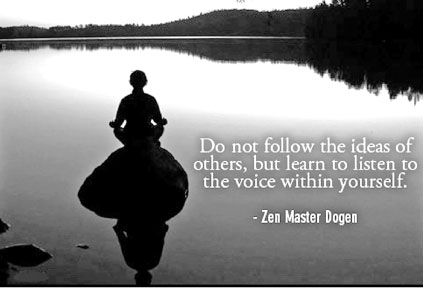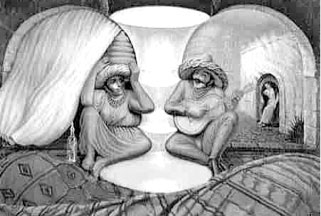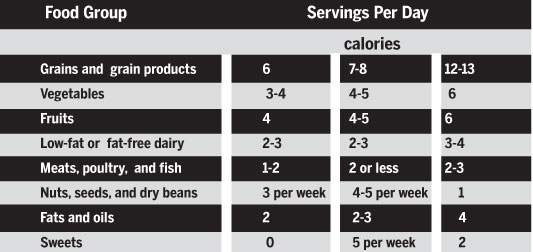|

Family values come first
by Nilma DOLE
In today's modern age, the smallest unit of society - the family - is
at bombarded with several influences that compromise ethics in Sri
Lanka.
 We have seen the influence of television, media and now the Internet,
taking shape into our rather traditional society which are slowly
breaking down ethics, barriers. While being open-minded on certain
anti-societal values, how do we bring up children to face the world in a
modern era. We have seen the influence of television, media and now the Internet,
taking shape into our rather traditional society which are slowly
breaking down ethics, barriers. While being open-minded on certain
anti-societal values, how do we bring up children to face the world in a
modern era.
The Committee on Values in Family Practice of the College of General
Practitioners have published a book titled, 'Advising Ourselves about
Values in the Family Practice' which culminate into advising and
enlightening the public about values and how best we do not give into
different elements that would affect our well-being. From the simplest
form of peer pressure to decisions that could separate families, values
are addressed in this book.
A brief introduction shows us that Dr. Eugene Corea of the Sri Lanka
College of General Practitioners said, "We often lose sight of the
foundations that build our family and give in to more quick-fix
alternatives. If we think carefully about our values and our ethics as
humans, then we would lead better lives mentally and physically." He
said that the family practice is the medical specialty that offers
continual and comprehensive healthcare where values are not really
highlighted. However, as Sri Lanka's healthcare is one of the best in
the South Asian region, and as medical advancements are heavily invested
in, will genetically-designed embryos and latest developments that were
seen only in the West, penetrate our medical industry too? Here we take
a look at the main sections of the book that deals with ethics and
values:
1. Gratitude - Being grateful is one of the fundamental aspects of
learning to be happy in the world that you live in. Being grateful to
the people of Sri Lanka, your family and everyone around you is the
first step in attaining happiness and peace. If we aren't grateful to
the world we live in, what's the point of life anyway?
2. Loyalty - The doctor-patient or client-practitioner relationship
takes pride of place in all professional matters. Therefore, trust is a
vital factor in promoting loyalty. We should make sure that our personal
beliefs and attitudes do not prejudice the care we give others.
3. Advocacy - We should safeguard the health and welfare of people
and shouldn't waste public funds. Cultivating an interest in community
and social service organisations is vital as well as protecting the
public from misinformation and misinterpretation of professional matters
and issues regarding their health.
 4. Decency - We should conduct ourselves in a manner that would
maintain our dignity and should not engage in bad behaviour or bad
habits whilst in the workplace. We should also refrain from using undue
influence to fulfil our aspirations. 4. Decency - We should conduct ourselves in a manner that would
maintain our dignity and should not engage in bad behaviour or bad
habits whilst in the workplace. We should also refrain from using undue
influence to fulfil our aspirations.
5. Respect - We should respect human rights and listen to others with
respect.
6. Compassion - We should realise that to treat others with
compassion at all times and act accordingly.
7. Empathy - We should recognise the ideas, concerns, fears,
expectation of others
8. Integrity - We should be honest and trustworthy and accept
responsibility for our judgment and actions in professional matters.
9. Competence - We should be competent when it comes to handling
other people's problems.
Brain underpinnings for auditory and visual illusions
New research indicates that the integration of senses and functions
in the brain is common. About two percent of the population has a
condition called synesthesia, in which two different sensations, like
colour and sound, are experienced at once.
Although this condition is rare, the new findings suggest the brain
is wired in complex and sometimes overlapping ways to help people
interpret and understand their environments. The research was presented
at Neuroscience 2010, the annual meeting of the Society for Neuroscience
and the world’s largest source of emerging news on brain science and
health.
 The new findings show that: The new findings show that:
* Researchers have pinpointed the brain region responsible for the McGurk Effect, an auditory phenomenon in which viewing lips moving out
of sync with words creates the perception of other words. A brain area
known to play a role in language and eye gaze processing is the hub of
the sensory overlap (Michael Beauchamp, PhD, abstract 400.2).
* People adjust the perceived location of sensory stimuli faster than
previously thought. Results show that exposure to light for only a
fraction of a second alters the perceived source of a subsequent sound.
The findings have implications for the development of hearing aids and
rehabilitation from brain injury (Ladan Shams, PhD, abstract 125.1).
Other recent findings discussed show that:
* Synesthetes who describe colours as either inside their minds or
outside in the world have distinct brain structures and processes (Romke
Rouw).
* People who share one type of synesthesia, in which letters and
numbers create the experience of colour, describe drastically different
sensations from one another. This indicates that synesthetic experiences
are more idiosyncratic than is commonly realized (Avinash Vaidya).
* In people with synesthesia, scientists found the brain’s colour-processing
area was active five to 10 milliseconds after the visual processing
areas, suggesting synesthesia occurs through direct communication
between the senses (David Brang).
“While synesthesia reflects an extreme manner in which the senses
communicate, there’s evidence that synesthesia operates through
mechanisms present in all individuals,” said press conference moderator
Vilayanur Ramachandran, MD, PhD, of the University of California, San
Diego, an expert on visual perception and behavioral neurology.
“Understanding these mechanisms can help us answer fundamental questions
about how the brain works.”
This research was supported by national funding agencies, such as the
National Institutes of Health, as well as private and philanthropic
organizations.
Source: Kat Snodgrass Society for Neuroscience
Is there such a thing as ‘junk food’?
by Larry Lindner
A number of nutrition professionals fairly bristle at the term “junk
food.” There are no good foods or junk foods, they say, just junky
diets. In other words, it’s the overall eating plan that counts, not the
stray high-sugar, high- fat, low-nutrient item that gets indulged in
here or there.
Many have got the message - so much so that you might say we’ve
thrown out the baby but kept the bath water. According to a study on the
eating habits of more than 15,000 adults more than 25% of our calories
now come from items such as cakes: pastries, ice cream, puddings, sugar,
syrup, soda sweetened noncarbonated beverages, potato chips, dressings,
gravies, butter, margarine, and oils.
 Fully a third of Americans, according to calculations made as part of
the research, average an astonishing 45% of their calories from those
foods. Another study of 4,700 found that soft drinks were the greatest
source of calories - providing more than 7% of daily calorie needs. Fully a third of Americans, according to calculations made as part of
the research, average an astonishing 45% of their calories from those
foods. Another study of 4,700 found that soft drinks were the greatest
source of calories - providing more than 7% of daily calorie needs.
All of these items - whether referred to as “junk foods,”
“high-calorie-low-nutrient foods,” or, as some of their most charitable
defenders call them, foods of “modest” nutritional value - have few
vitamins and minerals for the caloric wallop they deliver. A single
slice of cheesecake, for instance, has almost 500 calories and nearly
half the saturated fat that someone eating 2,000 calories a day should
average.
A can of soda pop has about 150 calories and virtually nothing else
(check out all the zeroes on a label). And a 150-calorie serving of ice
cream, which some people justify as being a reasonable source of
calcium, contains as much of that mineral as you could get in 20
calories’ worth (4 tablespoons) of skim milk.
“These choices are not without nutritional consequences,” says study
author Ashima Kant, an associate professor of nutrition at the City
University of New York’s Queens College. Not surprisingly, she found
that the more of those foods that make up one’s diet, the more calories
consumed; also, the more fat (and saturated fat) eaten, and the less
fiber.
Moreover, Kant found, as junk food in the diet goes up, down goes the
consumption of vitamins A, B6, B12, C, folate, calcium, and iron. The
lower the blood levels of many of those nutrients, too.
Furthermore, people who eat more junk food have lower levels of
“good” HDL-cholesterol that works to clear junk from the arteries. And
they have higher levels of homocysteine, a blood chemical that
researchers are finding is significantly associated with increased heart
disease risk.
Fats and sweets get all the attention
Fuelling the penchant for less nutritionally desirable choices, Kant
believes, may be the fact that “there is very little advertising for the
healthier foods.”
Indeed, when she systematically evaluated the ads in some
health-oriented magazines a couple of years ago, she found that fats,
oils, and sweets accounted for nearly 30% of all food advertisements,
whereas the grain, fruit, and vegetable groups combined accounted for
only 6% of food ads.
“You ask people, ‘Are you influenced by the ads that you see?’” Kant
notes, “and they say, ‘Never.’ But they perhaps are influenced.” Studies
have shown that children are heavily influenced by food advertising.
Researchers in Australia found that children who watched a lot of TV had
more positive attitudes toward and higher intakes of junk food.
The accessibility of junk foods may also influence people’s choices,
she reports, commenting that getting your hands on high-calorie,
low-nutrient items is “much easier than to find a vending machine that
has apples in it.”
But Kant doesn’t like the term “junk foods” because, as she puts it,
“it labels foods. I have nothing against any of these foods,” she says.
“They give us a lot of pleasure. Unfortunately,” she adds, “we are
eating a lot more of them and paying less attention to more nutritious
choices.”
Courtesy: A HealthyMe
Cricketers support people living with HIV on World AIDS Day
CRICKET: International cricket showed its support for people living
with HIV last week as leading players wore red ribbons on their playing
shirts in intranational matches to help celebrate World AIDS Day as part
of the Think Wise partnership.
Players and match officials wore red ribbons in the Tests and One-Day
International matches being played on December 1, 2010 between
Bangladesh - Zimbabwe, India - New Zealand and Sri Lanka - West Indies,
as well as on the opening day of the Ashes Test Match between Australia
and England on December 03.
In addition, Sri Lanka spinner Muttiah Muralidaran will travel to
Papua New Guinea to help take part in a variety of education and
fundraising activities promoting World AIDS Day.
Sri Lanka captain and Think Wise champion Kumar Sangakkara believes
it is vital that cricketers show their support for the Think Wise
initiative, a joint partnership between the ICC, UNAIDS, UNICEF and the
Global Media AIDS Initiative that has been running since 2003, that aims
to raise awareness around HIV prevention and reduce discrimination
towards those living with HIV and AIDS.
The dash diet
by Karen Schroeder Kassel
DASH stands for Dietary Approaches to Stop Hypertension, which is the
name of the research study that looked at the effects of eating patterns
on blood pressure. From this study came the DASH diet - a diet rich in
fruits, vegetables, and low-fat dairy foods, and low in saturated fat,
total fat, and cholesterol.
This diet was shown to significantly reduce blood pressure. The DASH
diet combined with a low sodium intake can reduce blood pressure even
further.
 Researchers believe that it is the combination of nutrients from this
eating pattern that helps to lower blood pressure. Specifically,
magnesium, potassium, and calcium, as well as protein and fiber may act
together to achieve this goal. Researchers believe that it is the combination of nutrients from this
eating pattern that helps to lower blood pressure. Specifically,
magnesium, potassium, and calcium, as well as protein and fiber may act
together to achieve this goal.
In addition to helping you manage your blood pressure, the DASH
eating plan is a healthy one that will help you manage your weight and
possibly reduce your risk of other chronic diseases. For example,
research suggests that women who follow the DASH diet can reduce their
risk of heart failure.
A registered dietitian can help design a DASH meal plan that will
work for you. Check out the one-day sample menu at the end of this page
for an idea of what is in a DASH meal plan!
How many servings do you need?
Depending on your calorie needs, these are the number of servings of
each food group you should strive for each day:
- A HealthyMe
|

